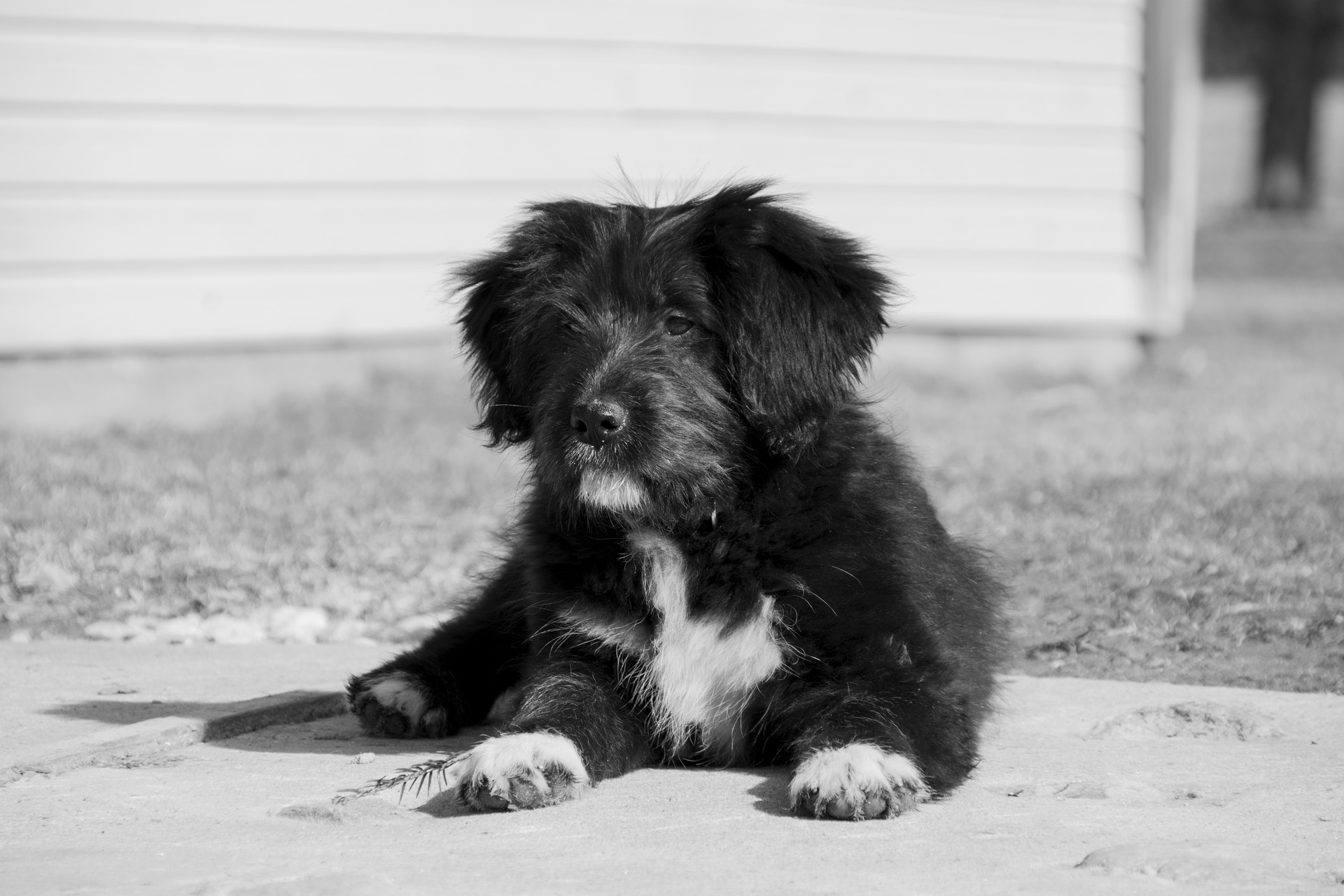Historically, many people believed that most aggressive dogs were displaying dominance, and the best way to handle aggression was to show dominance over the dog instead.
New research is showing that fear, insecurity, and anxiety are the typical causes of aggression, and attempting to show dominance over a fearful dog can make the problem worse.

So now you may be wondering how to resolve a dog’s aggression when it’s rooted in fear and anxiety instead of a sense of dominance. The key is that you must first identify and treat the underlying anxiety.
Identifying anxiety
Aggressive dogs who are acting out of anxiety will typically display different behaviors than other aggressive dogs. When your dog’s aggression is the result of fear or anxiety, their behavior will look like this:
- Tail held low or tucked between the back legs
- Ears pinned back
- Fur on the back raised up
- Weight positioned over the back legs with the head and neck lowered
- Looking sideways at their target
- Peeing, pooping, or expressing anal glands
- Lips peeled up in a “smile”
Once a dog learns that aggression helps to prevent scary things from happening, they will turn to that behavior more and more as a method of coping with their anxiety.
Anxious dogs are using aggression to mask their fear. They may be afraid of having their resources (like food or treats) taken away, they may be afraid of being attacked by another dog, or they may be afraid of being hurt by a human.
What NOT to do
Punishing an anxious dog for displaying aggression will only cause the dog to be more anxious and fearful, especially if punishment is only handed out sporadically or inconsistently.
They may learn not to act aggressively, but their underlying anxiety will only worsen and may lead to other problem behaviors such as licking themselves so compulsively that they develop wounds such as hot spots or lick granulomas.
Trading a behavioral problem like aggression for a health problem like a lick granuloma is not a good trade-off!
What TO do
When working with a dog that is dealing with fear or anxiety, you need to discover what is causing that anxiety and teach your dog how to manage that anxiety a little bit at a time.
If your dog is afraid of people, for example, you will need to work on socializing your dog with other people VERY slowly. If your dog starts to bark at any person who comes within 5 feet of him, for example, then reward your dog for staying calm while a person is a safe 10 feet away. As the person takes a step closer, reward your dog again for staying calm.
Eventually, he will learn that the approach of a person means treats instead of a threat.
The same technique can be used with a dog who is afraid of other dogs. Introducing them very slowly to other dogs should help to rewire their brain and reduce their fear of other dogs.
Your dog may also be suffering from anxiety that doesn’t seem directly linked to their aggression, such as separation anxiety. If they spend a large percentage of their life worried that you will never come home, then that anxiety will bleed over into other areas of their life, causing aggression at seemingly random moments.
A professional Florida dog trainer can help you identify triggers for your dog’s anxiety and help you come up with a plan to reduce your dog’s fear and anxiety.
Learning how to manage your dog’s anxiety will take time, patience, and possibly medication, but addressing your dog’s anxiety is the best way to treat and prevent aggressive behaviors.




